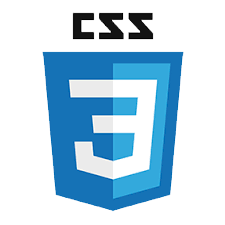
Inline CSS or Internal CSS
In writing code for web, HTML and CSS are the foremost basic combination. HTML provides the structure while CSS fills out to represent them in a specific way. There are three different ways for writing CSS for HTML Internal, External and inline CSS. Here in this post, we are going to study all about the Inline CSS style with their syntax, advantage, disadvantages, and various uses in the HTML code.
This is one of the easiest ways to add CSS to HTML elements by writing them along with them. It is a single element based process i.e, Inline CSS Style.
Here Style attribute is used in combination with HTML tags to add CSS values to them. This starts with tag name then a = equal sign then double quotes with values inside them.
So Style:” property:value;” is the right way to represent Inline CSS style. This can be added to any element HTML tag. And you can add multiple property values within any element. Also don’t forget to add semi-colon in the end otherwise some browsers might not render it all. These are a similar way of CSS just without any selectors.
Inline CSS Styles are used similarly as CSS but they are written inside each tag with specific values respectively. There are no CSS selectors we can use in these HTML structures.
Inline CSS Style Syntax for a single element Example
<!DOCTYPE html> <html> <body> <h1 style="color:red;">First Heading will appear Red now.</h1> <p> Here we are starting first paragraph</p> </body> </html>
Inline CSS Style Syntax for Multiple Elements Example
<!DOCTYPE html> <html> <body> <h1 style="color:red;">First Heading will appear Red now.</h1> <p style="color:aqua"> Here we are starting first paragraph</p> </body> </html>
The main advantage of Inline CSS’s are:
There are several disadvantages associated with the use of Inline CSS in general.
Also remember if there are three values written for the same element in External file, internal Style and Inline then the later Inline CSS values will get the preference. Thereafter Internal and then External in the order of the HTML rendering.
As a professional in IT, you will not be encouraged to use them anywhere. But there are still several exceptions where you have to implement them such as Emails where no external sources are allowed.
Emails – as they have a single source of a file
Older Websites
CMS such as Drupal, WordPress for any specific Front-end elements
Dynamic Contents that are created such as onclick, show function with JavaScript.
In Semantic HTML Markup, CSS is kept separate so inline CSS is not recommended as it muddles the whole tag structure. So in case of editing HTML tags can be customized for changes easily while in case of inline CSS styling it will give a headache to designers to modify them on every occasion. For instance, in a large HTML file, inline CSS can cause unnecessary visual disturbance and take more time for any changes. With semantic structure, HTML and CSS separation modification can be done seamlessly.
Even for a small website to have similar CSS properties throughout the site separate file or external CSS is ideal. As same classes can be used again for all pages to have a uniform visual effect for users otherwise designers have to write the same CSS values on each page again and again.
This external file is connected to the main HTML document with a link tag and allows the use of the same class on multiple occasions.
Although Inline CSS Styles are rarely used and CSS external files are used predominantly still as an IT professional you should have a complete idea of its use. One important point that you should remember Inline CSS has more authority or Internal and External Style Sheets.
Sometimes Inline CSS necessary when there are no other options such as dynamic JavaScript coding. Email code has inline CSS as the source code is the same for this file so designers have to put inline CSS for each HTML Element.
Still, in the other 95% of the Website use the External files for ease of maintenance and reusability benefits.
Reference
W3.org inline styles definition
Here are some common examples of Inline CSS with HTML tags.
HTML Inline CSS
Inline CSS hover
HTML inline CSS background image
HTML inline CSS font size
Inline CSS ReactJS
Inline CSS button
HTML inline CSS table
App usage is growing steadily without showing any signs of slowing down. Hence, it is no surprise that mobile applications…
As the world has grown more digital, businesses have adapted themselves. An effectual adaptation includes online advertising. Offline advertising styles…
Step into a world where apps dance to the user's tune. Picture Instagram, a photo-sharing sensation that swept the globe.…
COVID-19 has led to a digitalization of lifestyle. As patients are taking their mental and physical health more seriously, healthcare…
Introduction WordPress, an immensely popular content management system (CMS), powers over 40% of the internet. What makes WordPress even more…
For moving companies trying to capture their market share amidst stiff competition, a tip or two about what they can…